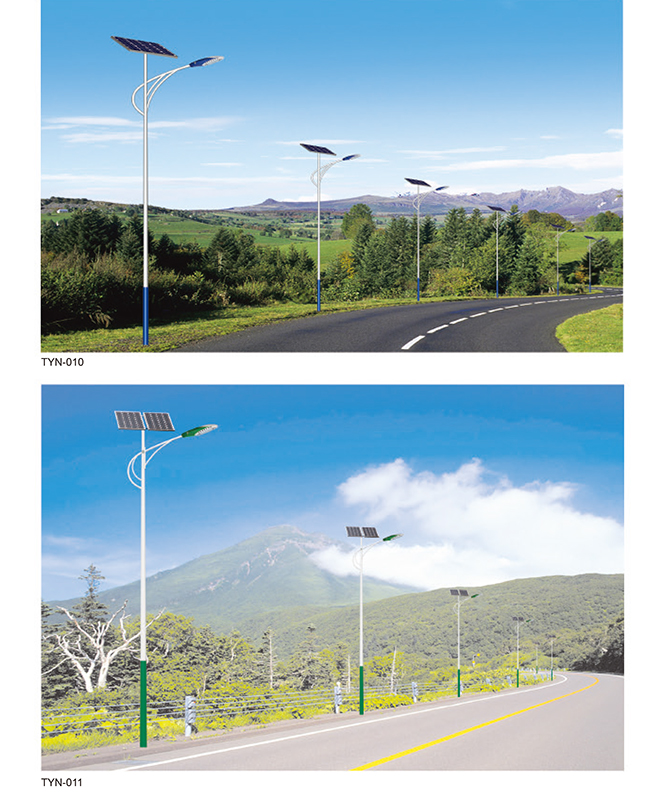- Home
- Products
- Street Lamp
- Integrated Solar Street Light
- Traffic light
- Rod components
- Lamps and lanterns
- Traffic Signs
- Guardrail
- Case & Project
- Technology
- About Us
- Newsroom
- Contact Us
Get a Quote 


The energy-saving advantage of solar street lights mainly comes from their working principle. Unlike traditional street lights that need to be connected to the power grid and consume city electricity, solar street lights use solar energy, a clean energy source, to provide energy for them. During the day, solar panels absorb sunlight and convert it into electricity and store it in built-in batteries. At night, the stored electricity is released through the street light controller to light up the LED lamps. This process is completely dependent on solar energy, thus greatly reducing the dependence on external electricity and reducing the cost of use.
Solar street lights have strong energy self-sufficiency. Due to the use of solar panels for energy collection and storage, solar street lights can convert sunlight into electricity and store it during the day, and use this stored energy for lighting at night. This means that solar street lights do not require external power supply or additional power transmission infrastructure. Therefore, solar street lights do not rely on traditional power grids, saving a lot of power transmission costs. Compared with traditional street lights, the latter need to be supplied by power companies, which not only wastes a lot of energy, but also increases high electricity bills.

Solar street lights use LED lamps, which have lower energy consumption than traditional street lights (such as sodium lamps, metal halide lamps, etc.). LED lamps have higher brightness and lower power consumption, which enables solar street lights to effectively reduce energy waste while ensuring lighting effects. In addition, LED lamps have a longer life and can usually be used for several years, reducing the maintenance costs caused by replacing lamps. Therefore, solar street lights not only save electricity during use, but also effectively reduce maintenance costs.
Traditional street lights mostly rely on fossil fuels for power generation, and a large amount of greenhouse gases such as carbon dioxide will be produced during use, leading to air pollution and the intensification of the greenhouse effect. In contrast, solar street lights use clean solar energy and do not produce any greenhouse gases or pollutant emissions. Therefore, the use of solar street lights helps to reduce carbon emissions and promote green and environmentally friendly urban construction. This advantage is of great significance to the global goal of promoting carbon neutrality and reducing environmental pollution.
The energy-saving advantage of solar street lights is not only reflected in its zero electricity bill, but also in the improved energy efficiency. Traditional street lights often require a complex power transmission network, and there will be certain losses during the transmission of power. Solar street lights have almost no loss in power use, because the solar panels and batteries are directly connected, and the generation, storage and use of electricity is almost a direct process. In addition, modern solar street light systems are equipped with intelligent controllers that can adjust the brightness according to actual needs, for example, reducing the lighting intensity during the night when there are few people, thereby further saving energy. These intelligent control systems make the energy use of solar street lights more efficient.
Solar street lights are particularly suitable for remote areas where the power supply is unstable or cannot be connected to the power grid. In these areas, laying power transmission lines is not only costly, but may also be restricted by natural conditions, such as mountains, rivers and other geographical obstacles. Solar street lights do not require grid infrastructure, are more convenient to install, and are less expensive. By utilizing local solar resources, solar street lights can work normally without grid support, helping these areas save power construction and maintenance costs.
Although the initial investment cost of solar street lights is high, especially in the purchase of solar panels, batteries and LED lamps, in the long run, the operating cost of solar street lights is low. Traditional street lights require long-term electricity bills and frequent maintenance and replacement, while solar street lights are powered by the sun and require almost no electricity bills. In addition, the life of its LED lamps and solar panels is long, which reduces the cost of long-term maintenance and replacement.
|
Traditional Streetlights |
Solar Streetlights |
|
Depend on the grid |
Self-sufficient, rely on solar energy |
|
Higher energy waste |
Higher energy efficiency |
|
Require electricity fees |
No electricity fees required |
|
Frequent maintenance needed |
Lower maintenance requirements |
|
High carbon emissions |
No carbon emissions |
|
Lower initial installation cost |
Higher initial installation cost, but long-term cost savings |

 +86 150 6287 9911
+86 150 6287 9911  [email protected]
[email protected]  Yangling Road Industrial Concentration Zone, Songqiao Town, Gaoyou City, JIangsu, China.
Yangling Road Industrial Concentration Zone, Songqiao Town, Gaoyou City, JIangsu, China. Copyright © Yangzhou Shangyuan Intelligent Transportation Technology Co., Ltd. All Rights Reserved.
Wholesale Intelligent Streetlight Manufacturers Privacy
Privacy

